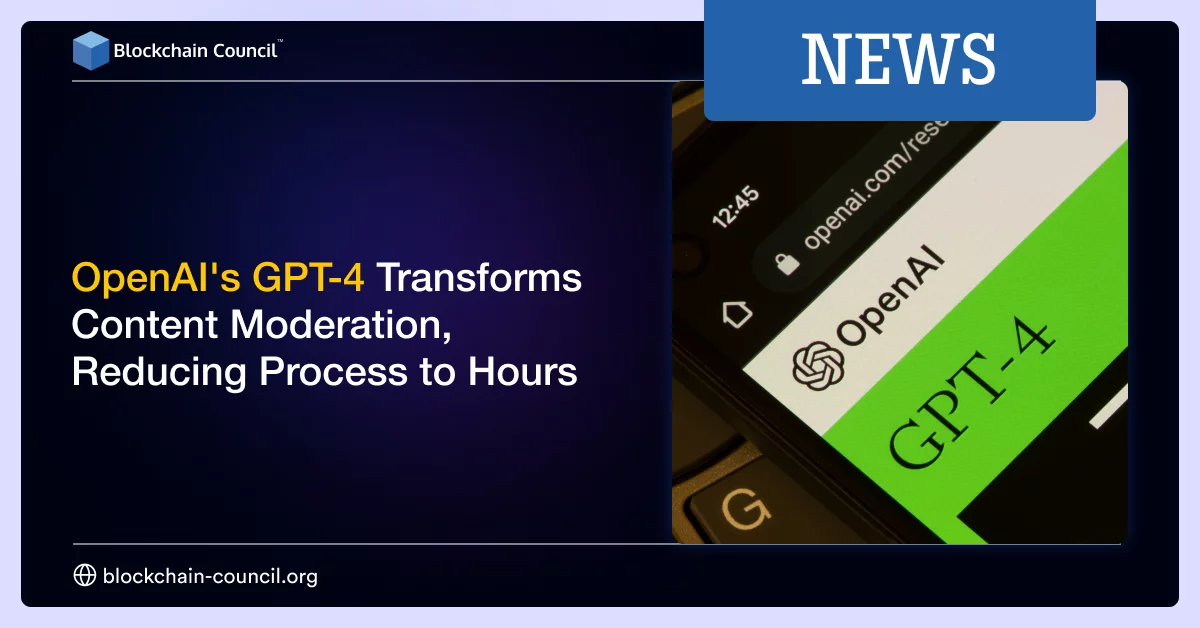
- Blockchain Council
- October 12, 2024
Artificial Intelligence (AI) is gradually becoming essential in improving risk management and credit evaluation methods in the financial sector. It helps in making these processes more efficient, accurate, and balanced, transforming how banks and lenders evaluate credit risk and handle possible defaults.
AI in Risk Management
Traditionally, financial institutions often struggled with managing risks due to the enormous amount of data and the fast emergence of new threats. Past methods relied heavily on manual reviews of past data, which made it tough to recognize new risks or react swiftly. AI has transformed this by automating data analysis, increasing prediction accuracy, and delivering timely insights.
AI-powered systems have the capability to analyze large volumes of data from various sources like transaction records, market movements, and even social media content. These systems detect unseen risks, such as patterns of emerging fraud, more quickly than humans can. For instance, AI tools can process transaction data instantly, identifying irregularities that may point to fraudulent actions or financial trouble. This preemptive approach helps financial institutions to remain ahead of possible problems, reducing defaults and financial losses.
Another valuable aspect is that AI models are consistently updated and refined. These algorithms adapt and learn from new information, keeping risk assessment models current as market situations change. This flexibility is vital in today’s rapidly shifting financial space, where economic conditions and regulations are always evolving.
For developers streamlining risk management systems, the Certified Artificial Intelligence (AI) Developer™ credential could make your work more efficient.
AI’s Role in Credit Scoring
Credit scoring used to rely mostly on limited historical data like payment records and debts, often overlooking key factors that could affect someone’s creditworthiness. AI has filled in these gaps by analyzing a wider variety of data sources and using advanced machine learning models for better assessments.
AI-based credit scoring looks at both structured and unstructured data from non-standard sources, such as social media activity, utility bills, and even mobile usage habits. By examining this broader scope of information, AI can spot trends that indicate financial stability or potential risk, which allows lenders to make better-informed decisions. This thorough approach not only improves credit accuracy but also addresses biases often present in traditional credit scoring methods.
For instance, AI can use data from telecom companies, such as call frequency and payment patterns, to evaluate creditworthiness for those without conventional financial records. This creates opportunities for the underbanked and people with limited credit backgrounds, fostering broader access to loans.
Advantages of AI-Driven Credit Scoring
More Accurate Predictions
AI’s capability to evaluate enormous datasets and reveal hidden insights makes it highly effective in predicting credit risks. Machine learning models can assess the likelihood of default by considering multiple factors that traditional models might ignore. These enhanced predictive abilities result in better credit evaluations, lowering the risk of lending to unreliable borrowers and offering better terms to those typically overlooked.
Increasing Financial Access
One of the most valuable outcomes of AI-enhanced credit scoring is its ability to broaden credit access for underserved groups. Many people, especially in developing markets, don’t have standard credit histories, making it difficult for them to secure loans. AI can use alternative data sources like rent payments or utility bills to assess creditworthiness, granting these individuals better access to loans and financial services. This helps empower more people financially and reduces poverty cycles.
Speeding Up Decision-Making
AI models are capable of analyzing data and generating credit scores almost instantly, helping lenders make faster decisions about loan approvals. This quick turnaround benefits both lenders and customers by shortening the time it takes to access funds. It also allows lenders to manage their risk better, as they can adjust decisions using the most up-to-date information.
Practical Applications and Real-World Examples
As of 2024, many leading financial organizations are using AI not only to enhance credit scoring but also to manage risk more comprehensively. For example:
- Companies like Experian have incorporated machine learning into their credit decision-making processes. These models enable them to analyze vast internal and external datasets more efficiently than older systems, improving risk assessment and decision-making. This allows businesses to offer loans to a wider range of clients with greater confidence in repayment.
- Another example is Atlas Credit, a small lender, which saw a significant increase in its loan approvals while cutting risk losses by using AI-driven models. These machine learning tools allowed Atlas Credit to approve more loans without raising their exposure to bad debts, showing how AI can make lending safer while also more inclusive.
Challenges and Considerations
Although AI offers considerable benefits, it also presents some challenges, especially in terms of data quality and meeting regulatory requirements. For AI models to work effectively, they must rely on accurate, high-quality data. Poor or incomplete data can lead to flawed results, putting lenders at higher risk.
Furthermore, AI-driven credit scoring systems need to navigate through complex regulatory frameworks. Financial institutions must ensure that their AI models comply with data privacy laws and avoid reinforcing biases that could unfairly impact certain borrower groups. Institutions also need to prioritize transparency, offering clear explanations for credit decisions to maintain trust with both customers and regulators.
Conclusion
AI is changing risk management and credit scoring, offering more precise, efficient, and fair assessments. By analyzing diverse data sources and employing machine learning, AI provides real-time insights that improve decision-making while reducing defaults. These developments not only benefit financial institutions by making operations smoother and less risky but also open up credit opportunities for underserved populations.





































































 Guides
Guides News
News Blockchain
Blockchain Cryptocurrency
& Digital Assets
Cryptocurrency
& Digital Assets Web3
Web3 Metaverse & NFTs
Metaverse & NFTs
